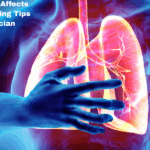
Tuberculosis, commonly known as TB, is a highly infectious and potentially fatal disease that has been a longstanding global health concern. In this comprehensive article, we aim to provide an in-depth understanding of TB, from its intricate modes of transmission to the criticality of early diagnosis and treatment. Let’s embark on a journey to explore the depths of this disease and the steps needed to combat its impact effectively.
Understanding Tuberculosis: A Comprehensive Overview
Tuberculosis is caused by the bacterium Mycobacterium tuberculosis, which predominantly targets the respiratory system. However, it’s crucial to recognize that TB can affect various parts of the body, such as the kidneys, spine, and brain. With symptoms ranging from persistent coughing, chest pain, and fatigue to weight loss and fever, TB can significantly compromise an individual’s well-being.
The Alarming Spread: How TB Transmission Occurs
The transmission of TB occurs primarily through the inhalation of tiny airborne particles containing the TB bacterium. When an infected person coughs, sneezes, or even speaks, these particles are released into the air, putting individuals nearby at risk of inhaling the bacteria. This risk escalates in crowded spaces and areas with inadequate ventilation. It’s essential to be vigilant, as just a few particles can lead to infection.
Beyond the Surface: Latent TB Infection
Interestingly, not all individuals infected with TB experience immediate symptoms. This is referred to as a latent TB infection. During this phase, the immune system manages to contain the TB bacteria, preventing its active multiplication. However, if the immune system weakens, latent TB infection can transform into active TB disease. This underscores the importance of regular health check-ups and preventive measures, even for seemingly healthy individuals.
Recognizing Active TB: Symptoms and Indicators
Active TB disease comes with a range of symptoms that can sometimes mimic those of other illnesses. A persistent cough lasting for weeks, accompanied by chest pain and coughing up blood, is a common sign. Moreover, individuals may experience unintentional weight loss, fatigue, fever, and night sweats. These indicators, although not exclusive to TB, warrant immediate medical attention and proper diagnostic evaluation.
Diagnostic Tools and Medical Interventions
Accurate and timely diagnosis is pivotal in managing TB. Various diagnostic methods, including chest X-rays, sputum cultures, and molecular tests, aid in identifying TB infection. Once diagnosed, a comprehensive treatment regimen involving antibiotics is prescribed. Adhering to the treatment plan is vital to prevent the development of drug-resistant TB strains, which can complicate the treatment process.
The Looming Threat: Drug-Resistant TB
The emergence of drug-resistant TB strains has added a new layer of complexity to the battle against this disease. Drug-resistant TB arises when the bacteria become immune to the effects of conventional TB medications. Treating drug-resistant TB demands longer and more intricate medication regimens, often with more pronounced side effects. This underlines the urgency of adhering to treatment protocols to mitigate the risk of drug resistance.
The Crucial Role of Timely Treatment
Timely intervention plays a pivotal role in containing the spread of TB and preventing its severe consequences. Untreated TB not only endangers the health of the infected individual but also amplifies the risk of transmission within communities. Prompt treatment reduces the potential for complications, minimizes transmission, and curtails the likelihood of developing drug-resistant strains.
Taking a Preventive Stance: Strategies to Combat TB
Preventing TB requires a multi-pronged approach that involves raising public awareness, administering the BCG vaccine, ensuring infection control measures in healthcare facilities, and addressing socio-economic factors that contribute to the disease’s spread. Educating individuals about the signs, transmission routes, and the significance of seeking medical assistance empowers them to be proactive about their health.
Galvanizing Global Efforts to Confront TB
The battle against TB extends beyond borders. Collaborative efforts between governments, healthcare organizations, and communities are crucial in enhancing diagnostic capabilities, ensuring equitable access to effective treatments, and elevating public understanding of TB’s impact. By fostering international partnerships, we can collectively alleviate the burden of this disease and pave the way for healthier societies.
Summary
In Summary, tuberculosis remains a formidable global health challenge that requires collective action and comprehensive strategies to mitigate its impact. This infectious disease, caused by Mycobacterium tuberculosis, can affect multiple parts of the body and presents a range of symptoms, making early diagnosis crucial. The alarming spread of TB, primarily through airborne transmission, highlights the need for improved ventilation and infection control measures, especially in crowded settings.
The concept of latent TB infection emphasizes the importance of consistent healthcare check-ups and preventive measures; as even asymptomatic individuals can carry the bacteria. Recognizing active TB symptoms promptly is essential for early intervention, accurate diagnosis, and effective treatment. Diagnostic tools like chest X-rays and molecular tests aid in identifying TB infection, enabling healthcare providers to tailor appropriate antibiotic regimens.
The emergence of drug-resistant TB strains underscores the urgency of adhering to treatment plans and preventing the development of resistance. Timely treatment not only improves individual outcomes but also curbs transmission within communities. A multi-faceted approach is vital in preventing TB, including public awareness campaigns, vaccination, infection control in healthcare settings, and addressing the socio-economic determinants of the disease’s spread.
Global collaboration is essential to combat TB effectively. Governments, healthcare organizations, and communities must unite to enhance diagnostics, ensure equitable access to treatment, and educate the public about TB’s impact. By working together, we can alleviate the burden of TB and strive for a healthier, TB-free future for all. Remember, knowledge, awareness, and timely action are our most potent tools in the fight against tuberculosis.




